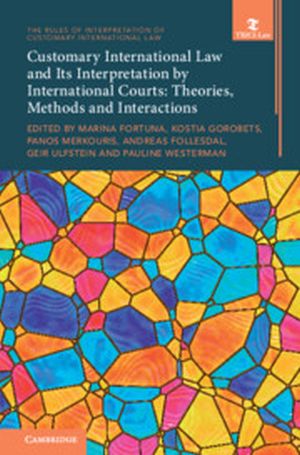
It is notorious that international courts and tribunals have greatly contributed to the development of customary international law (CIL) by, for instance, articulating the constituent elements of custom and clarifying the conditions required for its modification. This volume demonstrates that they have also been actively engaged in the interpretation of CIL. In elucidating CIL interpretation before and by international courts and tribunals, the volume chooses three focal points: theory, method and normative interactions. Viewing CIL and its interpretation from these vantage points leads to a more complete picture of the role and function of CIL interpretation in international courts.
The volume encourages readers to question orthodox theories on CIL and its interpretation, to look anew at what has long been labelled mere identification of custom, and to take a systemic approach to CIL, which, even in the process of interpretation, remains unwaveringly connected to treaties and general principles of law.